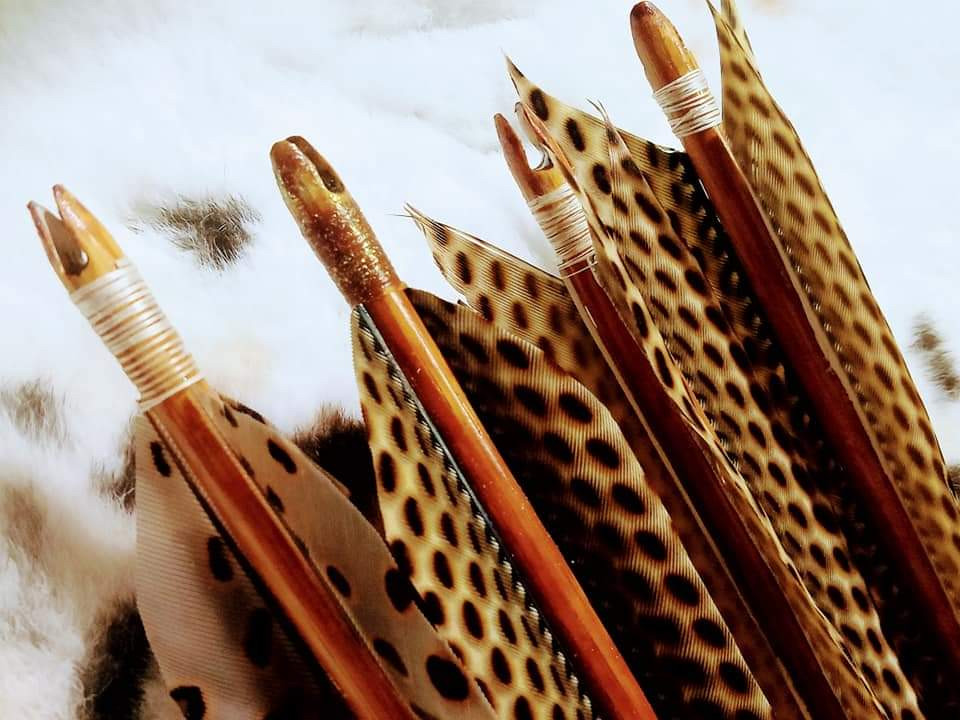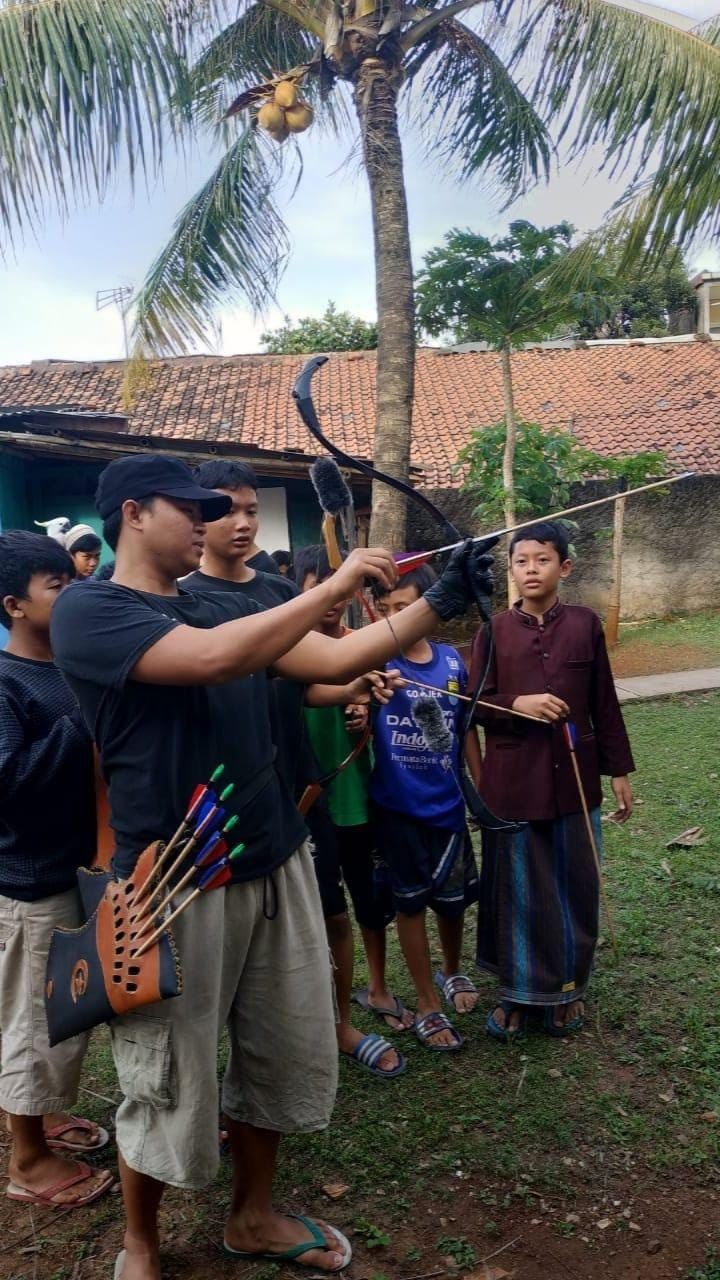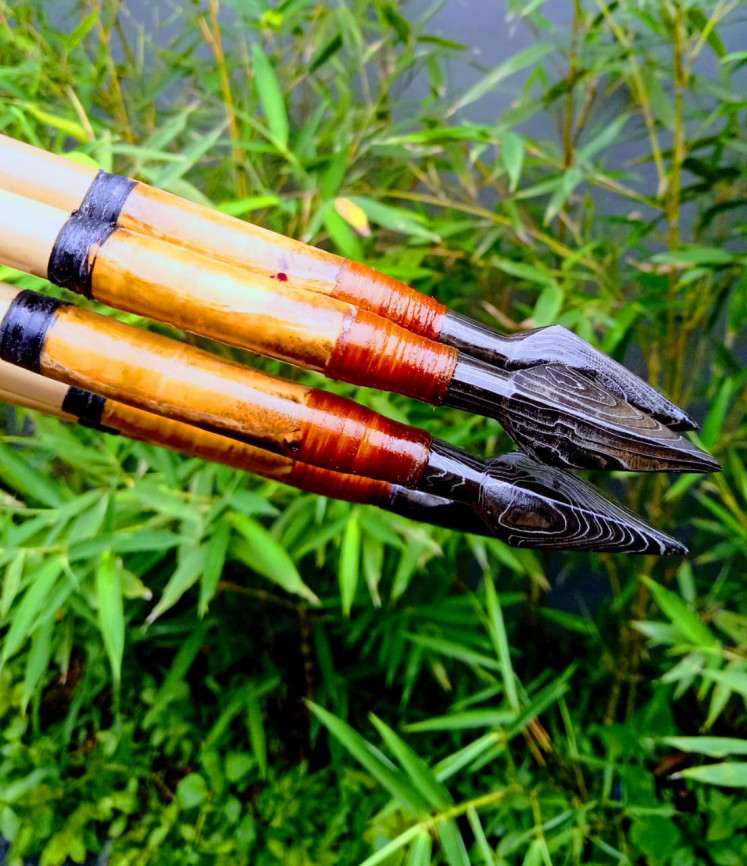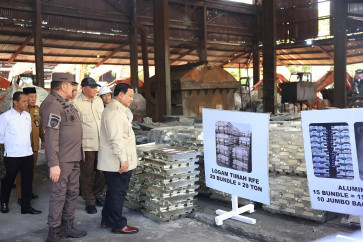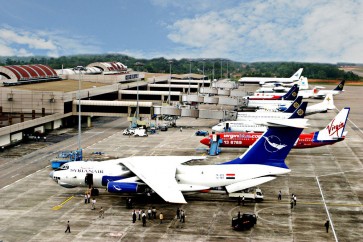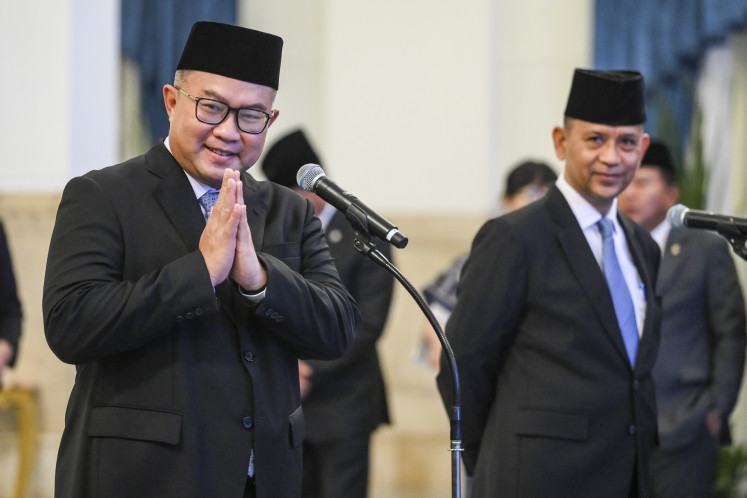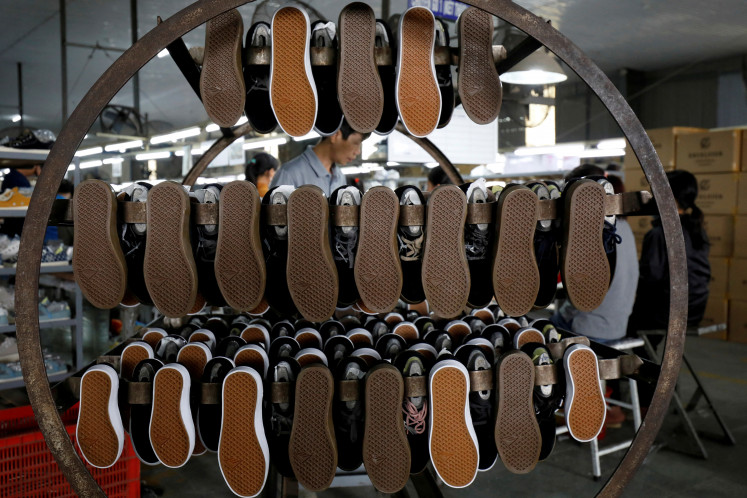Popular Reads
Top Results
Can't find what you're looking for?
View all search resultsPopular Reads
Top Results
Can't find what you're looking for?
View all search resultsStraight shooters: Making traditional arrows with Indonesia's fletchers
Change text size
Gift Premium Articles
to Anyone
S
tudies have confirmed the earliest evidence of archery dates back 64,000 years ago with the finding of quartz arrowheads in Sidubu Cave, present-day South Africa. Since then, bows and arrows have continued to develop throughout the world.
As with homes, food and clothing, the bow and arrow evolved to suit the needs of the people that used them. For example, the Manchus lived in the cold north and hunted big game such as the Ussuri brown bear and Amur tiger, so they made strong bows that threw heavy arrows.
Meanwhile, the Japanese lacked the resources to make short bows that could deliver a significant impact with common-sized arrows, so they made their bows and arrows noticeably long. On the other hand, the Romans, Koreans and Turks developed baby arrows. It is said these arrows were designed so that their enemies would not return the shot.
With the rise in popularity of archery in Indonesia, many enthusiasts have begun turning themselves into fletchers, people whose job it is to make arrows. These include Yogyakarta-native Roy Ambar Irawan, who creates arrows based on instructions found in a historical Turko-Javanese warfare manual penned in the 1800s.
Roy claimed he was one of the pioneers of Asiatic archery in Indonesia. He said he could count on his fingers the number of people who used Asiatic bows when he started.
"I started doing archery in 2014. I began with the standard bow, […] later, someone gave me a Korean traditional bow in the same year. When I tried shooting it, [I was amazed] because compared with the long standard bow, the smaller [Korean] bow performed better," the 40-year-old arrow maker said.
"In late 2017, I met someone who had knowledge of Turkish archery. He contacted me and sent me photos of a manuscript written in the Arabic and Old Javanese scripts. […] He came from the clan of Suryenglaga, who was, in turn, the younger brother of Prince Diponegoro. I then began to learn Turko-Javanese furusiyya [martial arts] from him [and the clan]."
Roy explained that the manuscript, called the Book of Suryenglaga, consisted of poems pertaining to warfare practices. The techniques are based on those of the Turks because the Ottomans were the rulers of Mecca when Diponegoro sent an envoy to the holy city to study martial arts. Later, he modeled his troops after the Ottomans, in formations, weaponry and uniforms.
Roy conducts research on the manuscript with the clan. In particular, he recreates the bows and arrows found in the book.
"Most of the arrows found in the manuscripts are made of bamboo. […] The bamboo should neither be too young nor too old. This is called tengah tuwuh […] around three to five years old. It should not grow near a source of water. It should not be harvested during the rainy season or a full moon," Roy said.
"The manuscript says there are seven types of arrows based on the target's distance, but I simplified them into three — short, medium and long. [I also simplified the arrow-making process] because following the manuscript letter for letter makes it [painstakingly long]."
Roy said what separates his arrows from his competitors is the fact that he bases his arrows on instructions found in the manuscript. He sells his bows and arrows under the brand Kang Roy Archery.
Quality check: Obby Rodyana tests his arrows with neighborhood kids. (Courtesy of Obby Rodyana) (Courtesy of Obby Rodyana/Courtesy of Obby Rodyana)Meeting market demand
Roy preferred not to discuss his earnings, unlike 28-year-old Obby Rodyana, who said his yearly revenue could amount to around Rp 170 million (US$11,300).
Obby established OBBAY Archery in 2016. His workshops are located in Bogor and Bandung, West Java. While Roy focuses on Turko-Javanese arrows, Obby says he makes "whatever the customer wants".
"I started [making arrows] as a hobby before trying to sell them. My target market is […] those who are demanding in their requests. I want to help people to get the best of this very beneficial sport. Therefore I do my best to provide them with the best arrows. [I pay attention] to the spine and straightness, [and my arrows are] neat," Obby said.
Roy said he did not serve many foreign customers, but when he did, most of them came from neighboring countries such as Malaysia and Thailand. Obby, meanwhile, often shares on his social media testimonies from his customers from Europe and the Middle East. Nevertheless, Obby and Roy agreed that foreign consumers were easier to please.
"Domestic customers are very demanding. They want this and that but [are unwilling to pay] the presented price. With international customers, you decide the arrow specifications for them. When they request something complicated, they are willing to pay more," Obby said.
Obby said three out of 10 of his customers came from abroad. This is in contrast to Nurman “Agus” Santosa, who has sold arrows to only four Indonesians. Most of his customers are from the United States, Australia, New Zealand, Europe, the Middle East and South Asia.
"I don't know why, but I am quite famous abroad. Maybe because my arrows are unique while also functional," Agus said.
"I wanted to highlight the fact that my arrows are made using locally sourced materials, so I named my brand Nusantarrow — Nusantara arrow, but it could also mean Nurman Santosa arrow."
'Exotic': Pictured is a number of bamboo arrows with hand-forged Damascus heads created by Nurman 'Agus' Santosa. (Courtesy of Nurman 'Agus' Santosa) (Courtesy of Nurman 'Agus' Santosa/Courtesy of Nurman 'Agus' Santosa)Agus said he fell in love with bamboo, especially Tonkin cane arrows imported from China. He then began looking for local equivalents of the species to build arrows himself. Agus now focuses on making functional, artisanal arrows.
"After six months of searching [in Magelang, Kebumen, Wonosobo and Mount Merapi], I found a similar bamboo species. Even better, the distance between the nodes was between 80 and 100 centimeters [which made it possible for a nodeless bamboo arrow]. I named it Tonkin Merapi because it grew on the slopes of Merapi. I then became the first to introduce nodeless bamboo arrows both in Indonesia and even in the world," he said.
Agus said he then looked elsewhere to avoid relying on one site. He found similar species of the best quality in West Java and South Kalimantan.
"Because the bamboos looked exotic, I thought to myself that the other components should be made of equally beautiful, locally sourced materials. I nock my arrows with buffalo horn and sonokeling rosewood and fletch them with pheasant, stork, owl and eagle feathers, all of which I acquire legally. I buy molted feathers from Bandung Bird Park, Kamojang Eagle Conservation Center, a zoo in Yogyakarta and ornamental chicken breeders," he said.
Agus explained that he targeted international customers to avoid competition with local "master arrow makers" — besides, he said, his arrows, which go for $225-525 a dozen, might be too expensive for the domestic market.
"Indonesian archers think my arrows are too beautiful to shoot. Not to mention the price tags are way higher compared with other locally made arrows. However, they are not as expensive for foreigners," said Agus.
"Armin Hirmer [an archery influencer on YouTube] has compared my arrows with those of Sarmat [Archery], Alibow and Fairbow UK [established traditional archery brands], and mine bested them — in speed, accuracy and penetration."
ohmg

